- YNU
- News and Information
- [Event Report]Noh Theater Tour and Workshop
[Event Report]Noh Theater Tour and Workshop
On Thursday, November 2, 2023, as part of the "Intercultural Experience Program" supported by the Yokohama National University Alumni Association, "Noh Theater Tour and Workshop" was held at Yokohama Noh Theater, with 25 participants.
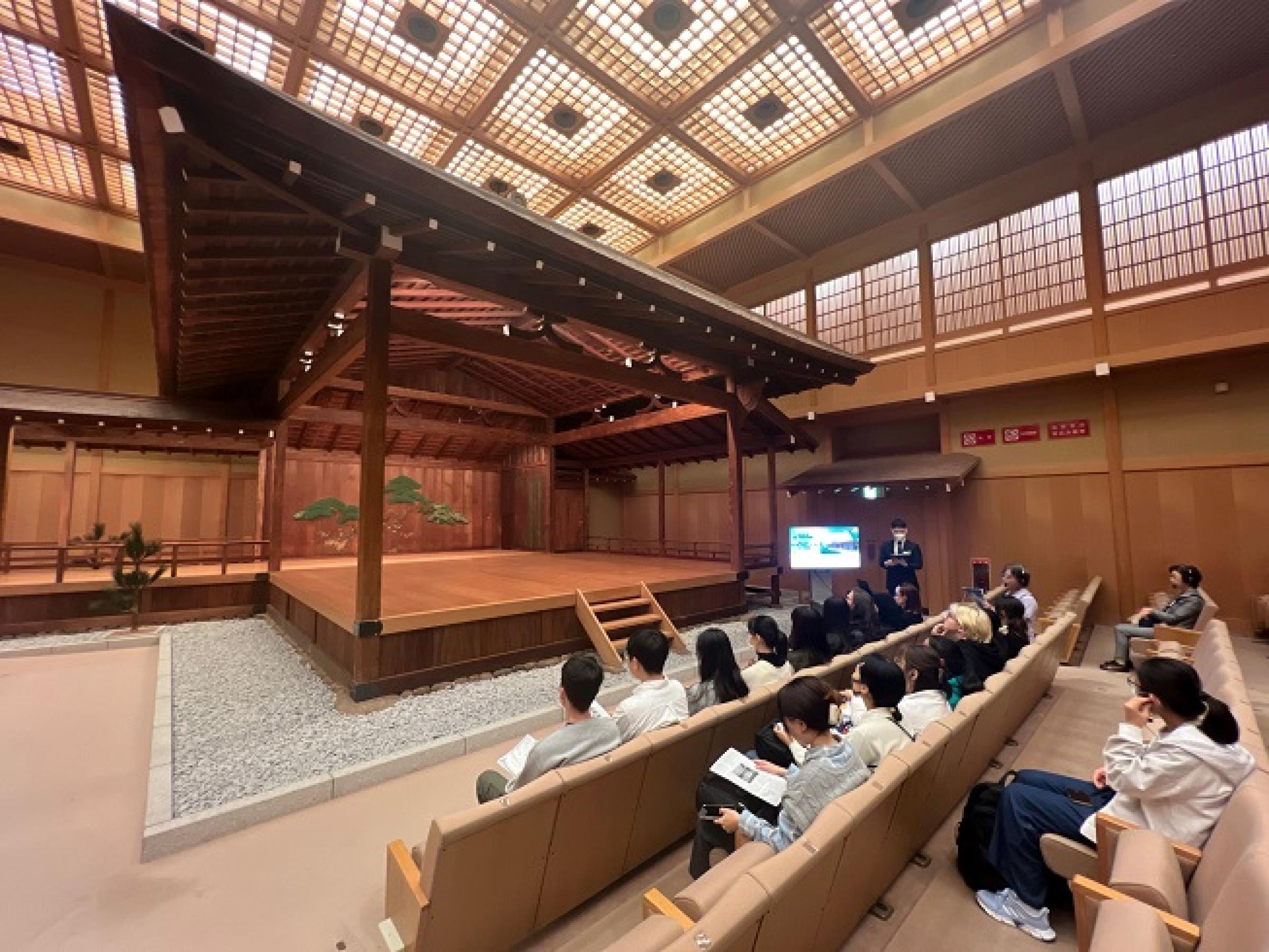
①Explanation of Yokohama Noh Theater and Noh/Kyogen
Firstly, the staff at the Yokohama Noh Theater provided an overview of the "Noh Stage." Originally constructed in 1875 as the retirement residence for Maeda Nariyasu, the former lord of the Kaga domain, the stage was later relocated to the residence of Matsudaira Yorinaga, the former lord of the Takamatsu domain, in 1919. Until 1965, it served as a venue for many renowned performers. In 1996, it underwent restoration and became the Yokohama Noh Theater, appreciated for its historical significance as a Noh stage with a legacy spanning over 150 years.
Following this introduction, participants received information about the history of Noh and Kyogen, along with their distinctive characteristics and differences. Both Noh and Kyogen, recognized as UNESCO World Heritage, have a history dating back approximately 650 years to the Muromachi period. While Noh is an elegant dance drama rooted in classical literature and waka poetry, Kyogen is a comedic play that conveys human folly and sorrow through humorously crafted lines and forms. Noh and Kyogen share a common origin in performing arts and have traditionally been performed alternately, a tradition that persists to this day.
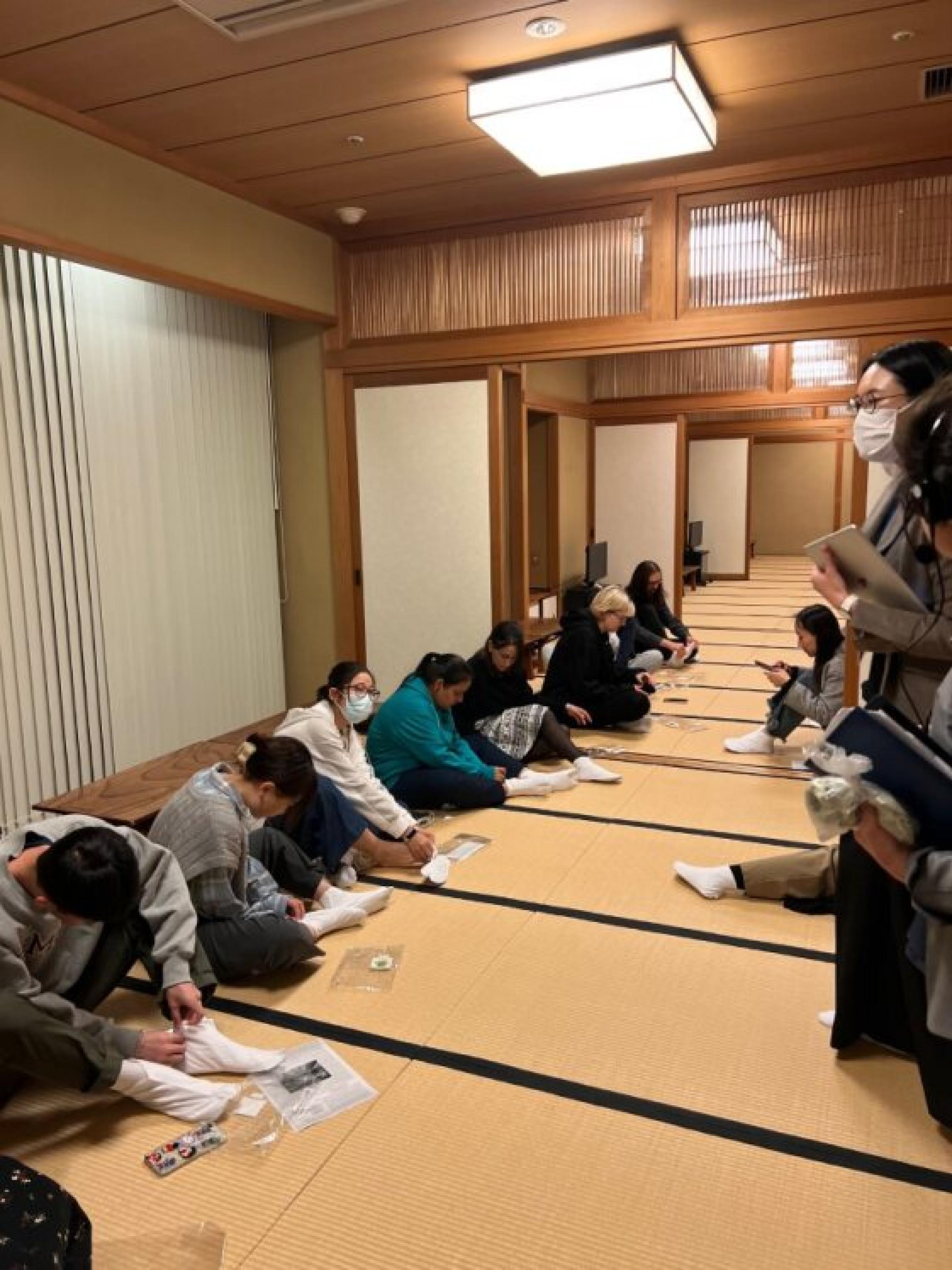
②Interior Tour (Exhibition Hall, Dressing Rooms)
In the exhibition hall of the Yokohama Noh Theater, valuable Noh masks, librettos, fans, musical instruments, and costumes are permanently displayed. Participants attentively gazed at each exhibit while listening to explanations. Later, they moved to the dressing rooms and changed into tabi (traditional Japanese socks) . Since the stage is considered sacred, performers must wear white tabi symbolizing purity when going on stage. Most participants struggled as it was their first time putting on tabi.
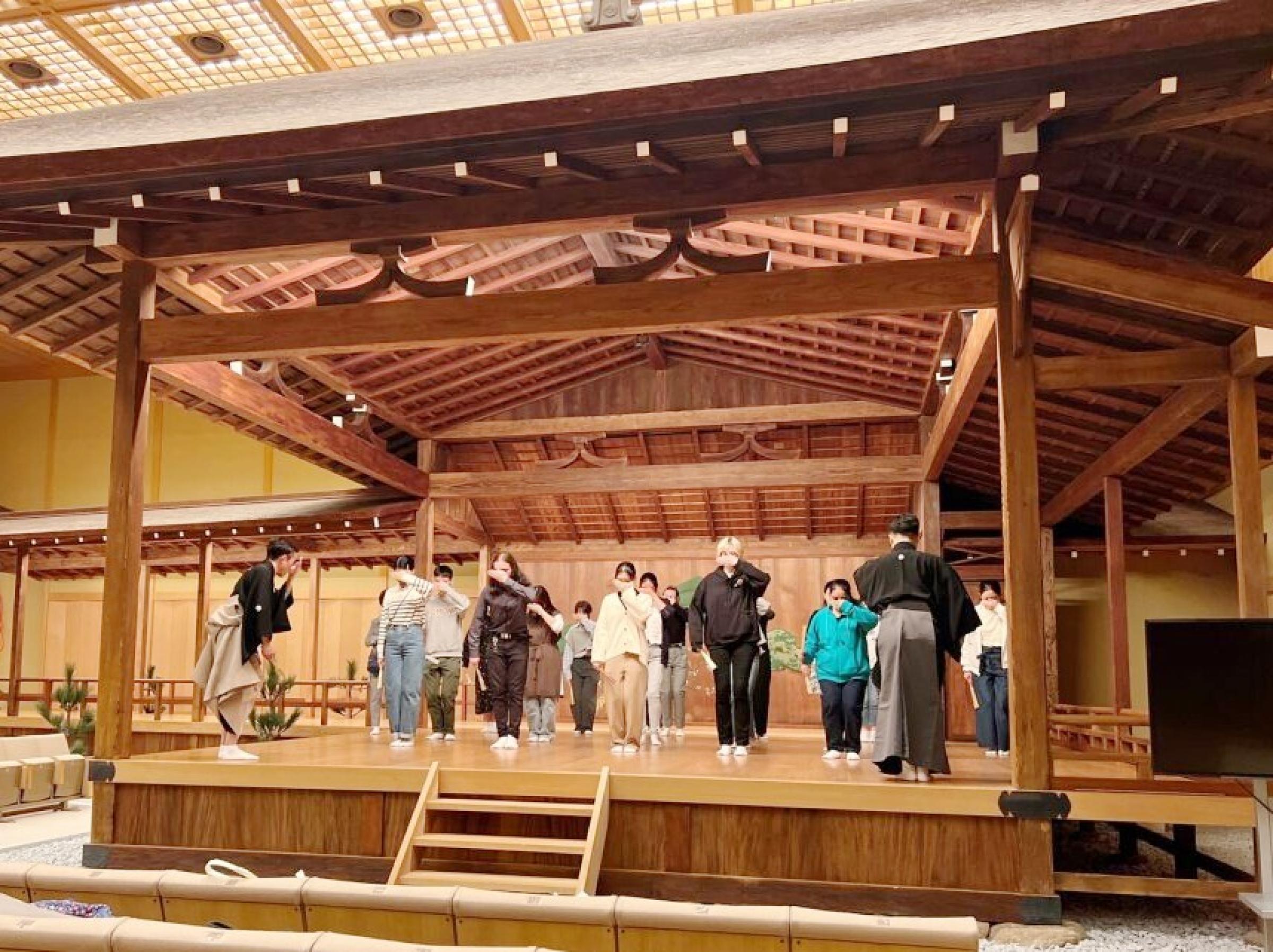
③Workshop (Raising the Curtain, Chanting "Hagoromo," Experiencing Noh Movements)
Before going on stage, participants experienced raising the curtain. In sync with the Noh performer, they lifted the curtain using bamboo sticks. Finally, they went on stage to experience chanting "Hagoromo." Following the Noh performer, they chanted the lyrics while learning several movements such as "Kamae," "Hakobi," "Shikakehiraki," and "Shiori." In the emotional "Shiori" movement, participants concentrated seriously, as even a slight shift in hand position could convey different meanings, making it seem like they were having a fever or even smelling their hands.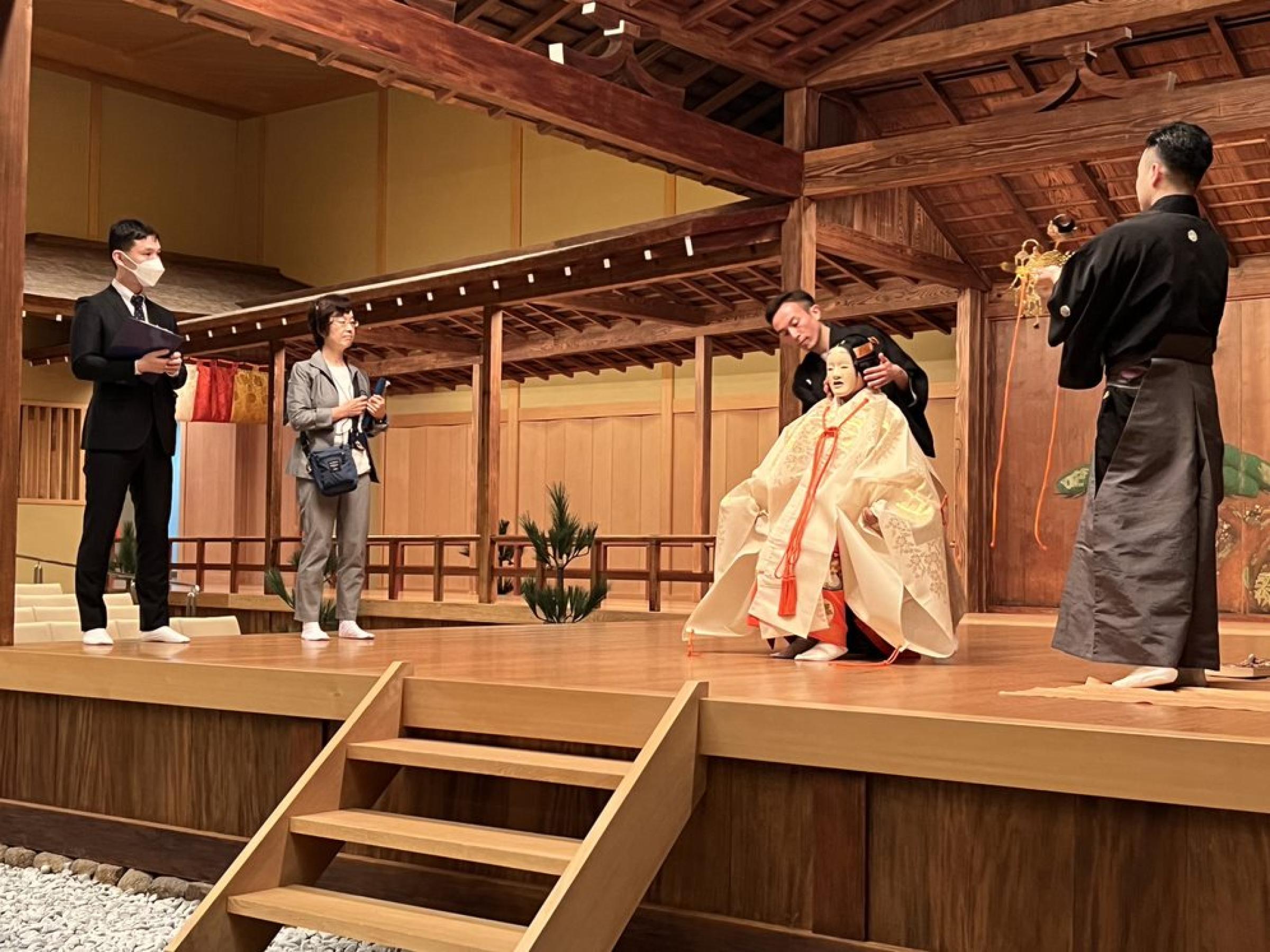
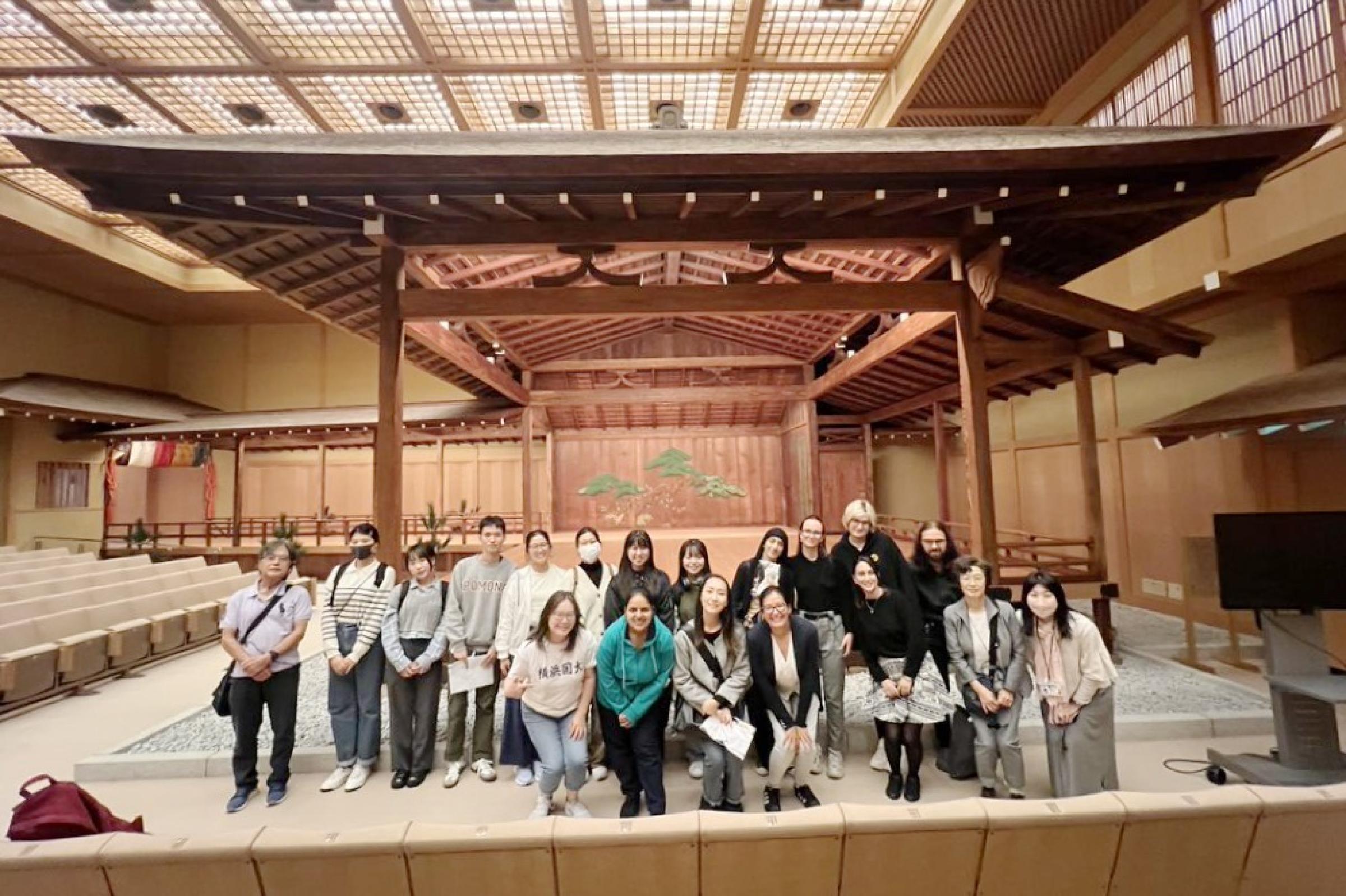
④Demonstration of Dressing a Representative Student in the "Hagoromo" Costume
In the costume dressing demonstration, a representative student was dressed in the "Hagoromo" costume by a Noh performer. The Noh performer efficiently explained each garment and accessory. The representative student then challenged the "Shiori", which they had learned earlier, while wearing the "Hagoromo" costume.⑤Performance of 'Hagoromo' and 'Killing Stone'
A Noh performer presented performances of 'Hagoromo' and 'Killing Stone.' Participants were overwhelmed by the powerful performance, allowing them to once again appreciate the beauty of Noh.⑥Q&A Session
During the Q&A session, international students asked questions such as, "How much practice is required to become a Noh performer?" and "Can women or foreigners become Noh performers?" The Noh performer patiently answered each question.Throughout the approximately two-hour program, participants not only deepened their knowledge of the Yokohama Noh Theater and Noh/Kyogen but also felt a closer connection to Noh and Kyogen through the workshop experience.
